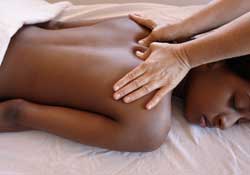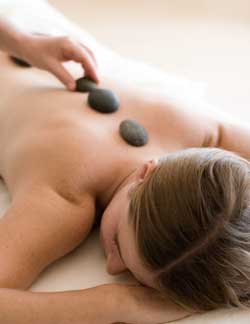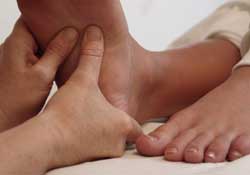What to Expect
This is your time. I will do everything possible to ensure that your experience is positive and rewarding.
With this in mind, I will encourage you to tell me what feels right for you, and what does not.
Clients will be encouraged to continue with regular massage therapy and to care for themselves at home and in their work lives, through mindfulness of posture, gentle stretching, self massage, use of heat or cold therapy, meditation or breathing techniques.
Often your body will continue to process the massage once you have left the massage table, allowing positive changes to occur for hours or days afterwards.
I encourage my clients to participate in their own health care decisions integrating holistic, alternative and conventional methods.
The more information I have about what you want, need and desire to experience, the better I can work with you during the massage to achieve your goals.
Therapies
Most massage sessions will include a combination of Swedish, deep tissue, and trigger point work unless otherwise specified.
Swedish Massage
This is the most common type of massage. The goal of Swedish Massage is relaxation of the entire body. This is accomplished by rubbing muscles with long, gliding strokes in the direction of blood returning to the heart. Additional techniques include circular pressure applied by the hands and palms, firm kneading, percussion-like tapping, as well as bending and stretching.
Swedish Massage is exceptional for increasing the level of oxygen in the blood, decreasing muscle toxins, and improving circulation and flexibility while easing tension.
Deep Tissue Massage
Deep Tissue Massage is similar to Swedish Massage but is used to target knots and release chronic muscle tension. Other benefits include reducing inflammation and helping to eliminate scar tissue. The focus is on the deepest layers of muscle tissue, tendons and fascia (the protective layer surrounding muscles, bones, and joints).
Deep Tissue Massage uses strokes across the grain of the muscle, not with the grain as with Swedish Massage. The more intense movements and techniques such as deep finger pressure, may induce that “good pain” feeling and cause soreness that lasts a couple of days before resulting in the desired relaxation and pain relief.
Trigger Point Therapy
Trigger Point Therapy is a pain relief technique to alleviate spasms, hot-spots, and cramping in the muscles. Trigger points may refer pain and other messages out to surrounding parts of the body. Controlled pressure is applied for several seconds, the muscle relaxes, the spasm is reduced and the muscle resumes its normal resting length. Though this type of work can produce “good pain” it does not have to hurt to achieve therapeutic goals. The result of Trigger Point Therapy is the elimination of toxins in the muscles and the release of energizing endorphins. A significant decrease in pain is often found after just one treatment.
Myofascial Unwinding
Our tissue has memory. As a result of past traumas, issues, and habits, we develop patterns of movement that are a reflection of our past and limits our future. This can twist and distort our muscles and connective tissue causing strands of dense fibrous tissue to continue holding and protecting various parts of our structures in painful and unbalanced positions.
In Myofascial Unwinding the therapist gently begins to unwind these tissue tensions, allowing the memories to begin to be released. This will cause the body to “replay” body movements that are associated with past injury or trauma. As the body relaxes in the therapist’s hands, the nervous system takes over and releases stored tensions like the uncoiling of a spring, allowing nerves which have been trapped for a very long time, to elongate and restore normal function. This can remove years of pain and discomfort. There can be repetitive movements during the release, many which duplicate the initial movements of the injury or trauma.
This type of therapy is recommended for anyone whose body tissues, pain and restricted motion can be tracked back to an initiating injury, accident, or physical trauma. Signs that Myofascial Unwinding may be beneficial include pain that returns only hours or days after your massage, unconscious muscular resistance to movement, twitching during relaxation especially before sleep and emotional release during massage. It is especially wonderful for those suffering with chronic pain, as it is gentle, painless and relaxing while providing the most needed of therapies.



